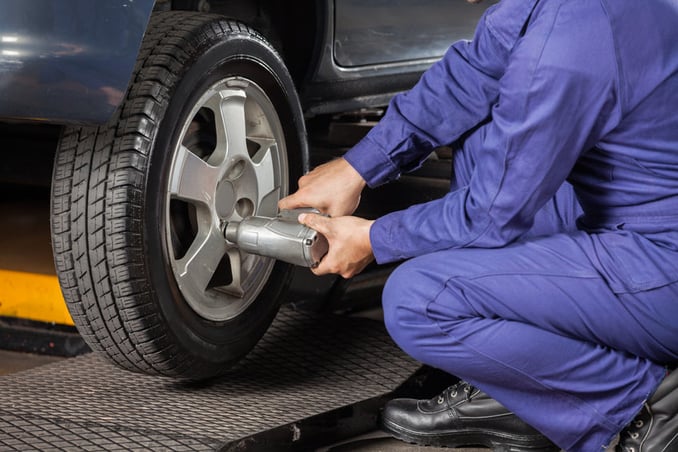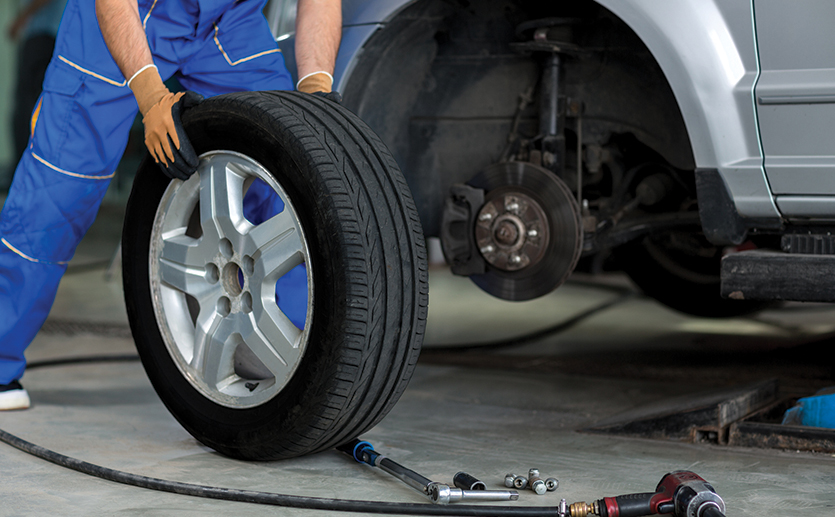Morris Tire: Your Regional Tire Specialists
Morris Tire: Your Regional Tire Specialists
Blog Article
Expert Guide to Tire Repair: Everything You Need to Know
Browsing the globe of tire repair service can be an overwhelming job for lots of car owners. From identifying the usual reasons for tire damage to understanding the intricate actions included in patching up a puncture, there is a wide range of understanding to understand. In this comprehensive overview, we will certainly decipher the intricacies of tire repair service, clarifying the various sorts of repair service kits readily available and offering beneficial understandings right into when it could be time to bid farewell to a damaged tire. Keep tuned as we dig deeper right into the subtleties of tire upkeep, furnishing you with the vital know-how to guarantee your tires stand the examination of time.
Typical Reasons of Tire Damage
What are the typical reasons that result in tire damages, influencing car efficiency and safety? Tire damage can take place due to different variables, with one of the key reasons being inappropriate inflation stress. Under-inflated tires can create too much warm buildup, causing increased wear and possible blowouts. Alternatively, over-inflated tires can result in minimized traction, unequal wear, and a harsher adventure.

One more usual reason for tire damages is poor tread deepness. Damaged treads can endanger grasp on the road, specifically in wet or slippery problems, enhancing the danger of accidents. Furthermore, driving over splits, debris, or sharp items can pierce or create cuts in the tire, damaging its structure and potentially creating a level.
Furthermore, improper wheel placement and unbalanced tires can also add to tire damage. Misaligned wheels can lead to uneven wear patterns, while unbalanced tires can create vibrations, influencing both the vehicle's handling and the tire's longevity. Regular upkeep checks and timely repair services can assist alleviate these typical causes of tire damages, making certain ideal automobile performance and safety.
Kinds Of Tire Repair Packages
To attend to the after-effects of usual root causes of tire damages talked about earlier, it is important to understand the various kinds of tire fixing sets available for lorry owners. There are primarily 3 kinds of tire repair work packages frequently used: plug packages, spot kits, and combination fixing kits.
Plug packages are a quick and easy remedy for fixing small slits triggered by nails or screws. They contain a T-handle device and rubber plugs that can be inserted into the puncture to secure the hole properly. Patch packages, on the other hand, are more ideal for larger leaks or cuts in the tire. These sets include a spot and adhesive product that is related to the internal lining of the tire to cover the damaged location safely.
Mix repair work packages provide the advantage of consisting of both plug and spot components, giving a detailed solution for a selection of tire damages scenarios. It is very important browse around here for vehicle owners to familiarize themselves with these various kinds of tire repair work sets to be planned for any kind of unanticipated tire concerns when traveling.

Actions to Repair a Tire Slit
Repairing a tire slit needs an organized technique and the right tools to ensure a safe and reliable remedy. When faced with a punctured tire, the initial step is to safely draw over to a flat, secure surface area away from web traffic. Involve the car parking brake and area wheel chocks behind the tires to avoid any unintentional rolling.
When to Replace a Tire
Determining the ideal time for tire replacement demands a thorough evaluation of various crucial elements connected to tire wear and safety and security. One vital aspect to consider is the tread deepness. As tires wear down, the deepness of the step reductions, impacting the tire's grasp when driving. look at this web-site Most specialists recommend changing tires when the step depth gets to 2/32 of an inch to maintain ideal traction (morris tire). In addition, examining the tire for any kind of indicators of damages such as cuts, bulges, or fractures is essential. These problems can endanger the structural integrity of the tire, increasing the threat of a blowout. Age is another considerable consider tire replacement. Even if the walk depth appears enough, tires older than 6 years should be very carefully checked out, as the rubber can weaken gradually, making the tire more susceptible to failure. Frequently inspecting these variables and consulting with a specialist can aid determine when it's time to replace a tire for ideal security when driving.

Tire Maintenance Tips for Long Life
After examining essential variables related to tire wear and security, executing proper tire upkeep practices is essential for maximizing the long life of your tires. Frequently checking tire stress is important, as underinflated tires can lead to boosted wear and decreased fuel performance.
Rotating your tires at regular periods, typically every 5,000 to 7,000 miles, promotes also tread wear throughout all tires. Inspecting tires for indicators of damages, such as cuts, protrudes, or leaks, is likewise important for preserving tire longevity. By following these tire upkeep pointers, you can maximize the life-span of your tires and make certain a smooth driving experience.
Final Thought
To conclude, comprehending common reasons for tire damage, using the appropriate tire fixing sets, complying with proper steps to repair a tire slit, knowing when to change a tire, and executing tire upkeep pointers are crucial for making the most of the long life of your tires. By remaining notified and positive in dealing with tire issues, you more helpful hints can make sure security when driving and extend the lifespan of your tires.
Report this page